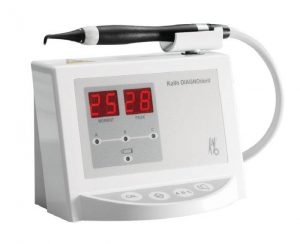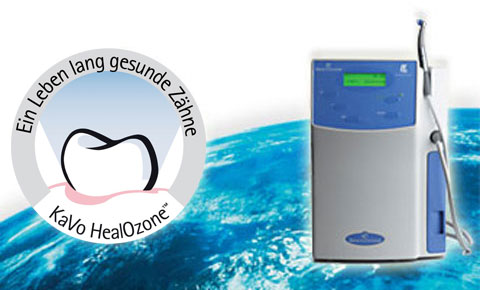Why I drove 3 hours in a snowstorm to another country to see a dentist and LOVED IT!
My trip to Canada to access one dental innovation uncovered a complete system filled with innovation. This is the first part of a story of innovation with fabulous success. This series of articles will:
- Demonstrate innovation with the OutCompete Predictive Innovation Method
- Give examples of several innovative technologies.
- Give an example of innovative service.
- Predict some future innovations.
- Diagnose reasons an organization fails to innovate.
- Show you how to improve your organization’s innovativeness.
Damaging radiation, toxic metals, caustic poisons, and amputations with power tools.
Does that sound like health care?
That horrific description is standard dentistry in the USA. Scary! They still use the same mindset from the 1800s when soldiers were told to bite on a bullet while a surgeon removed a leg with a hack saw to treat an infection. Modern surgeons have completely moved past such brutality, but most dentists are stuck with 200-year-old practices.
In fact a leading dental school in the US is still teaching the exact same techniques used during the 1800s. The only improvement is the addition of x-rays, ionizing radiation that can cause cancer. Is that because nothing better exists? No!
Much better technology exists. And more over the basic concepts have existed for nearly 100 years.
I went to Canada to receive treatment using one particular technology that isn’t approved in the USA. I drove three hours to L’Heritage Family Dentistree in Sarnia, Ontario to see Dr. John Milne and found a completely different and better approach to dentistry. I found real care for health.
Some background
A couple months ago I went to University of Michigan Dental School for some treatment. I hadn’t been to the dentist in 10 years and was concerned about some discoloration on my teeth. I was terrified years of ignoring my teeth had led to a serious problem.
I didn’t avoid the dentist because of any fear. I was just busy. I went to University of Michigan because it is where I pursued a PhD and I figured they would have the newest technology plus if I provide students practice I was helping medicine.
They found I had extreme build up of calculus, mineral deposits. The discoloration wasn’t massive cavities; it was just stains on the mineral deposits from the iced tea I had recently started drinking. They scheduled me for two intensive cleaning sessions. Each was 4 hours of painful scraping of my teeth with metal tools that left my gums raw and bleeding. I figured, that was the price I paid for not going sooner. I later discovered that is completely false. Dentistry should not hurt.
So the cleaning solved the problem I went in for but they also found a cavity. I had told them I was concerned about mercury amalgam fillings but they insisted that was the best thing. The standard silver fillings are really a combination of silver and mercury. It’s been known for over a hundred years that mercury causes brain damage. The Mad Hatter in the story “Alice in Wonderland” was insane because of mercury poisoning.
Mercury was used to treat felt to make hats. Because the mercury caused brain damage they stopped using it decades ago. And today serious effort is being made to prevent mercury poisoning from many sources, except dental amalgam.
I was almost ready to accept the mercury filling but what the professor at U of M said just didn’t make sense. I wasn’t an expert on dentistry but I am an expert on logic. His logic was seriously flawed. So I refused the mercury filling.
The professor directly called me crazy for wanting to try to find something better. And in the most sarcastic tone possible he said, “If you find a way to re-grow teeth then tell me and we will both make a fortune.” He meant it as an insult but he didn’t realize I’m a professional innovator. Too bad for him because making fortunes is what I do best.
With that direct challenge and my personal desire needing satisfaction, I sat down and applied the OutCompete Method to cavities.
Need Leads to Innovation
First step was to describe the perfect condition. That was easy. I wanted my “No Cavity” and if possible I wanted my natural tooth back. So I dug into the medical journals to understand cavities and see what other technologies were available. What I found was amazing, and led me to travel to Canada.
Cavities are caused by an infection.
Did you know that?
Yes. Cavities, or dental carries as the dentists call them, are caused by bacteria that grow in your mouth and the acids they create dissolve your teeth. Two bacteria cause most of the damage.
The first is lacto bacillus, the same thing that is in yogurt and cheese. Lacto bacillus eats milk products and excretes acid. That is what damages the hard outer layer of the tooth called enamel. When a hole develops in the enamel the second bacteria is what really does the serious damage.
Streptococcus mutans gets into the dentin and eats away the interior of your tooth. This is why its so important to properly clean your teeth. Read more about preventing cavities.
Teeth are alive.
Teeth aren’t dead material like hair or finger nails. Teeth are living tissue like any other bone. And like any living tissue, teeth can heal.
Stop the infection, and teeth heal.
First Dr. Milne’s assistant checked my teeth for cavities. I already went to U of M and they only found one cavity.
Dr. Milne’s assistant didn’t use X-rays. She used a laser to quickly detect cavities. When the DIAGNOdent shines a laser on active carries it causes it to glow. Measuring the level of the glow tells how bad it is. At U of M they wanted to drill my tooth just to find out the extent of the cavity.  They were going to do permanent damage just to gather information. There was none of that nonsense at L’Heritage Family Dentistree.
They were going to do permanent damage just to gather information. There was none of that nonsense at L’Heritage Family Dentistree.
So no harmful radiation and a better result with pinpoint accuracy. Very cool.
She found the one I already knew about, it was a 45, pretty bad. But she also found 2 others that U of M missed. One is a 20 and the other an 18. The DIAGNodent laser cavity detector is available in the USA so you don’t have to drive to Ontario to find a dentist that uses this innovative technology.
The student and professor at U of M relied on poking around with a sharp metal probe. If I didn’t wince in pain or the probe didn’t plunge deep into my tooth they didn’t know anything was wrong. Even at the U of M they explained that x-rays aren’t very good for detecting cavities, especially if you already have metal fillings. Those fillings hide things in the tooth.
Dr. Milne guessed that the serious cavity was from an old mercury amalgam filling that fell out. He explained that a drill causes micro fractures in the tooth. So drilling damages the tooth and causes it to fall apart later, besides removing a lot of healthy tooth to begin with.
Drill and fill is what they teach at U of M and that is what caused the cavity I now needed repaired.
To prepare this cavity Dr. Milne cleaned the rotted material away with an air tool and some abrasive powder. It only affected the very soft rotted part leaving the healthy part of the tooth perfectly in tact. It was so precise and gentle I didn’t even need to be numbed. NO PAIN AT ALL.
Before he repaired the hole he made sure to kill any infection. This is the reason I went to Canada. He used ozone gas to kill the bacteria. The treatment is called HealOzone First Step for Dental Innovation



 First Step for Dental Innovation
First Step for Dental Innovation
 Predictive Innovation Training
Predictive Innovation Training Predictive Innovation: Core Skills Book
Predictive Innovation: Core Skills Book RoundSquareTriangle.com
RoundSquareTriangle.com
[…] I had a cavity and the American dentist gave me only one option and I didn’t like it. I wanted better options. So I started innovating to satisfy my desire. Before you think that I started inventing something let me clarify innovation. Innovation is satisfying a demand. If you can find something that already exists and use it to satisfy the demand you innovated. So I began searching. The innovation I wanted was “No cavity”?. […]
Mark,
I don’t ever think of myself as remotely innovative but I do LOVE the idea of doing things for my health that are the most natural and noninvasive as possible. I wish these ideas would come to the good ole USA. I live in Minnesota so I could probably drive north too.
I’ve fought the damage that is done by the dentists several times over. I had congenitally missing teeth (the ones on either side of my top front teeth). They wanted to destroy 4 good teeth for the sake of two. I put up with a plate with two artificial teeth in high school until they came up with connections behind the teeth on either side. I had braces for 3 years in high school. When my upper teeth moved, my dentist wanted to do veneers. I opted, once again, to have braces on my top teeth (he never even suggested it). A few years ago I got my first crown, which I hate that I gave in to. There was supposedly a crack in my tooth indicated by pain with biting on food but no one could see it even with xrays. Bummer! I gave in and regret it. Now I have a part broken off of an upper molar in the back of my mouth. I haven’t allowed him to do another crown, yet. I’ve had temporary repairs done twice but now it’s broken out again. I’m hoping to at least seal it and not have to do away with it.
Sorry this is so long but you’ve hit a nerve, as you can tell! Thank you for taking the time to post your experiences and give us ideas of what else is out there. I’ll check out the rest of your website now!
[…] had a cavity and the American dentist gave me only one option and I didn’t like it. I wanted better options. So I started innovating to satisfy my desire. Before you think that I […]